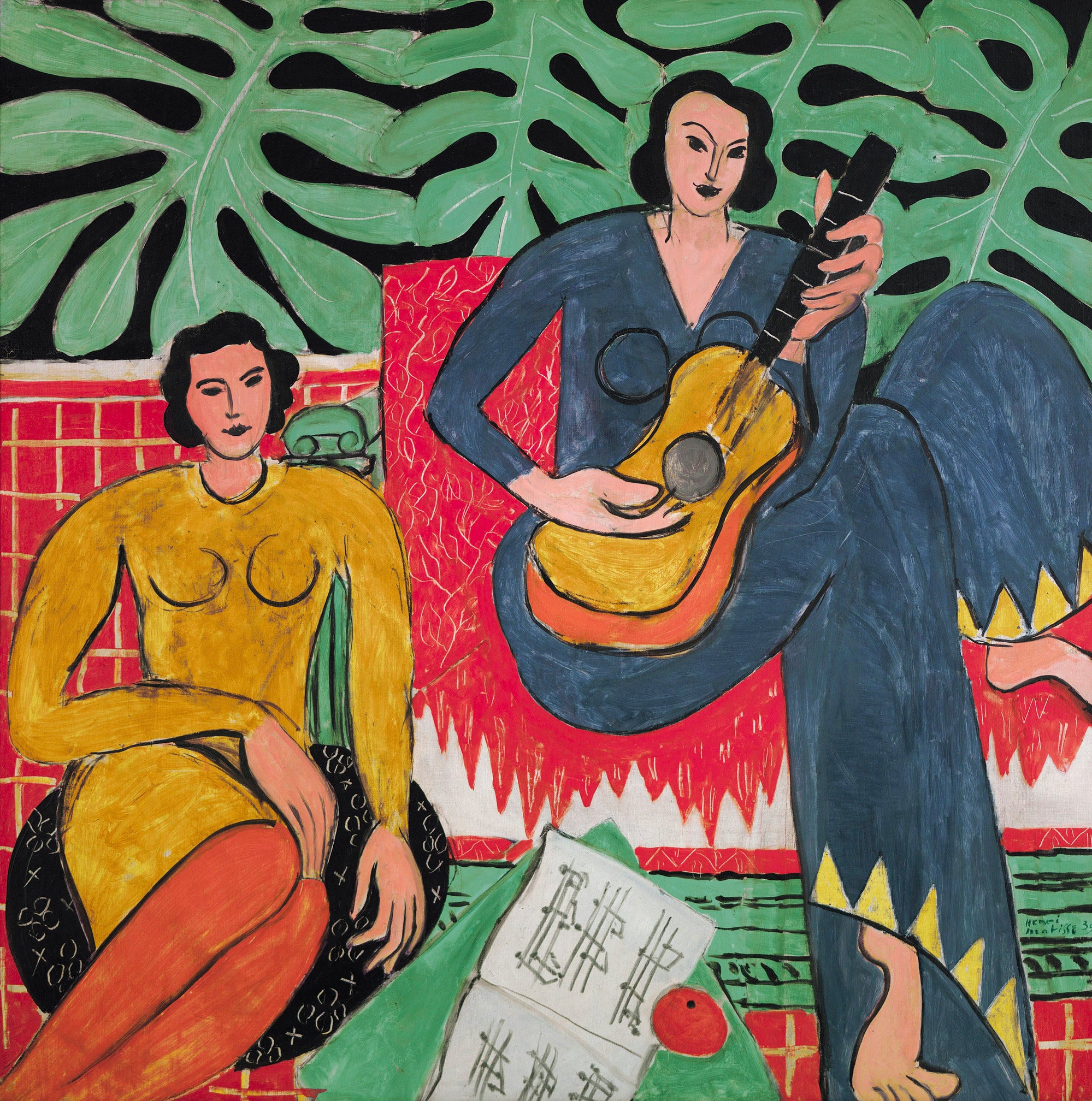What was the relationship between Henri Matisse and the music ?
The links between Henri Matisse and music are close and complex. In a very concrete way, first of all, it is a personal passion he plays the violin from his youth and has his children taught to play this instrument as well as the cello or the piano.
Throughout his life, his various pictorial researches were carried out in environments impregnated with music, a major source of inspiration, which allows him to evoke movement, rhythm, joy, melancholy or even rest.
Thus, the art of Henri Matisse is part of a long tradition of links between painting, music but also dance. Representations of music and their performers are very numerous in the art of Henri Matisse, whether in drawings, engravings, paintings or cut-out gouache paper and even, to a lesser extent, sculpture.
" The painter chooses his color in the intensity and depth that suits him like a musician chooses the timbre and intensity of his instruments " (Maria Luz, " Testimony ", 1952, EPA, P248).
The encounter between Henri Matisse and music
After leaving his native Picardy in the early 1890s, Matisse moved to Paris where, in parallel with his artistic practice, he developed a passion for music. Cafés-concerts, popular balls, or even Harcourt and Colonne concerts, allowed him to deepen his knowledge of classical music.
From the Opéra-Comique to Catalan sardanas and other traditional farandoles on the ports of Collioure, through numerous performances of classical ballets, Matisse will not cease to develop his passion for music.
Early representations of music in the work of Henri Matisse
From 1905 and 1907, Matisse began in earnest to depict musical subjects, painting numerous allegories such as Le Bonheur de vivre, in which the chalemie and aulos are danced and played, or La Musique (sketch), in which he features a violinist.
It is only during the period of his settlement in Nice (1917-1918) that Henri Matisse multiplies the representations of musicians and dancers, through the declension of typical, natural and elegant poses of young girls in ballet costumes.
The Ballets Russes
An initial cooperation with the Ballets Russes allowed Matisse to touch on the set and costumes for Stravinsky's Ballet The Nightingale's Song, which premiered at the Paris Opera (1920).
Then, in 1939, Henri Matisse worked again for the Ballets Russes, for a staging of Rouge et Noir (L'étrange Farandole) with music by Shostakovich, presented in Monte Carlo.
Also in 1939, he produced the masterpiece La Musique (Albright-Knox Art Gallery, Buffalo, New York).

Henri Matisse, La Musique (1939), Albright-Knox Art Gallery - Buffalo (United-States) © H. Matisse succession.
A Life Filled with Music
Music represented for Henri Matisse a pleasure, a pastime, but also at times a kind of consolation.
Between 1917 and 1954, in the hotel rooms and apartments of Nice or in the Villa Le Rêve, in Vence, which he lived successively, piano, violin, guitar, mandolin, lute and tambourine are part of the decor of the places and accessories of the studio.
For Matisse it is normal to use musical terms and he often uses comparisons with music. His language is characterized by notions of musicology, at least he appropriates the terms of musicians, such as " vibrato ", " chord " or " orchestration ".
The differences and common qualities between music and painting are for him only parallels "painting requires organization, by very conscious, very concerted means, like the other arts. Organization of forces - colors are forces - as in music, organization of timbres. But let us not confuse painting and music. Their actions are only parallels. (Degand 1945, quoted in EPA, p.300-301).





